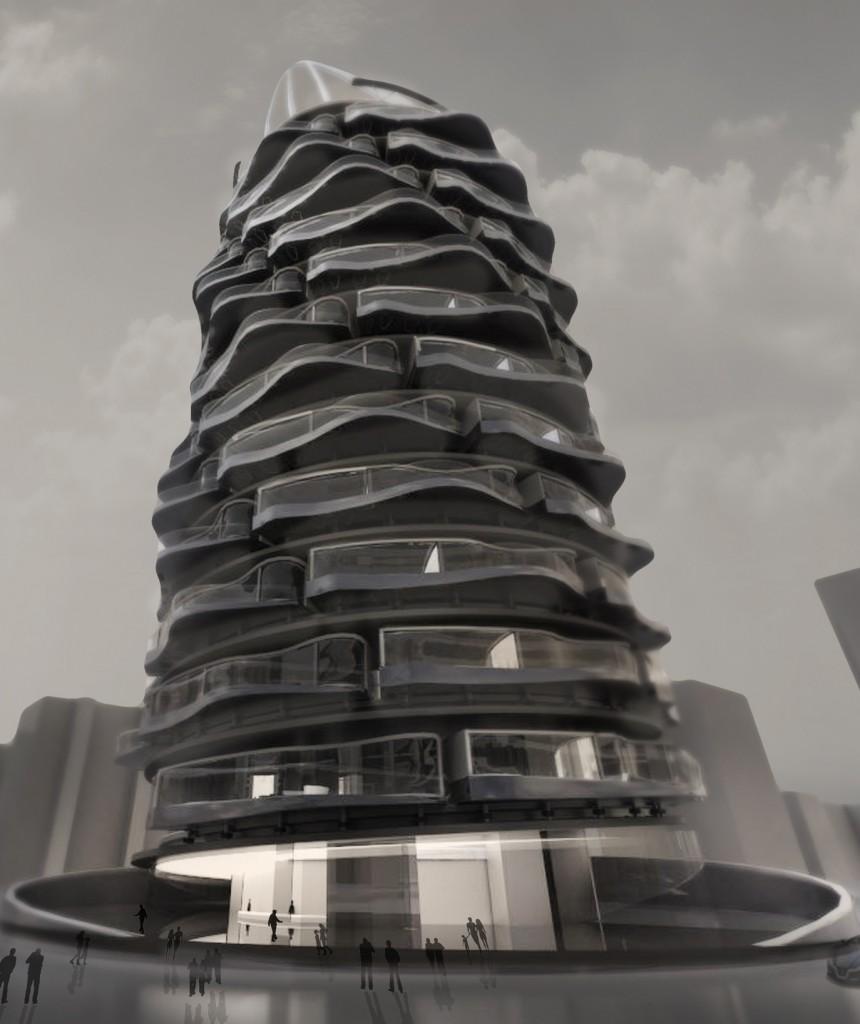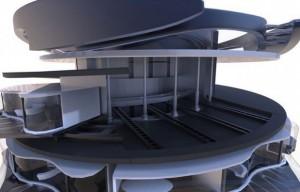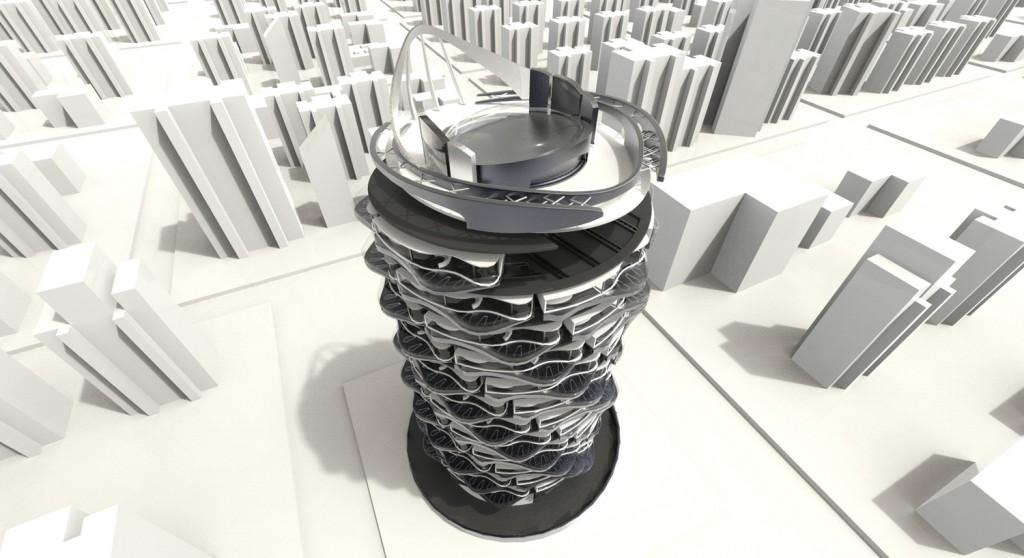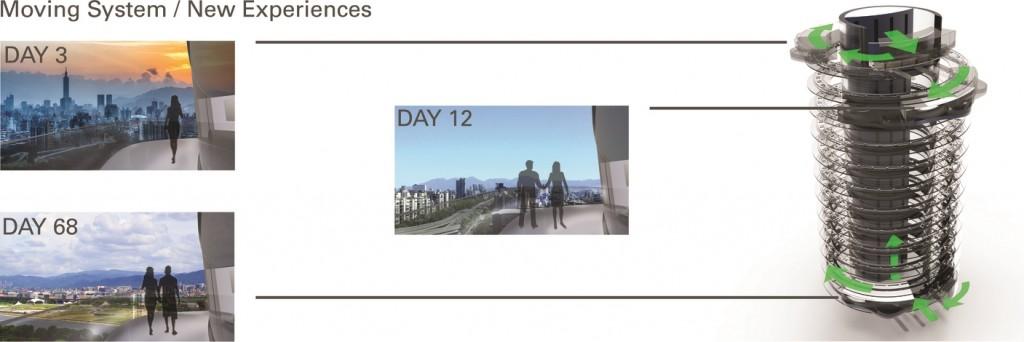One of the primary functions of science fiction, beyond being cool, is using the fantastic worlds being created to subtly critique the ills of today by envisioning the problems of tomorrow. Extreme division of classes is one of the more popular tropes of the genre, and they are often populated with over-crowded mega-cities where the wealthy live  literally at the top while the poor toil in the shadows of the massive urban sprawl.
literally at the top while the poor toil in the shadows of the massive urban sprawl.
In the here and now, the world’s population is moving into cities and denser population centers at unprecedented rates, and by mid-century some are estimating that nearly 70% of the planet’s population will be living in large urban areas. And a growing problem that many cities are having is how to fit more people in spaces that were already quite crowded. Rising demand for homes drives prices up, and often existing populations are gentrified out of their traditional neighborhoods and forced into smaller, less desirable locations while those who can afford it settle in the nicer areas.
Cities like San Francisco are already being criticized for allowing large corporations to create their own, segregated (essentially by wealth) busing system. In Los Angeles, traditionally middle class areas are being taken over by those who are willing to pay for better access to the freeways or the improving public transit system. In New York, the very idea of being able to afford a home with any sort of a view other than brick wall on a middle class budget is laughable. As with most quality science fiction, a concept quite often doesn’t remain fiction for long.
But an innovative industrial designer has come up with a concept apartment building that rotates each home at a pre-determined rate so at some point everyone will be able to share a high-rise view. Shin Kuo designed a building concept called “Turn to the Future” that envisions an egalitarian living space where no one lives on top of another, at least not for very long.
The building works very simply. Each apartment is on a spiral track that can slowly send it downwards at a rate determined by the building residents themselves. The tower would slowly revolve, and each unit would work its way down to the bottom of the 27-story high-rise. Once an apartment has reached the bottom, a crane system would pull it to the top so it can start the process all over again.
“My vision of the new buildings in the future is to design a building from people’s desires and needs. The project is not technology driven; it is a proposal for a new way of living, dwelling and a new lifestyle. I am going to provide a new chance for humans to communicate with living spaces and actively interact with the city though moving and changing relationships,” Kuo explained in his proposal.
The apartments move on rollercoaster-like tracks that are controlled with infrared sensors and would have several movement and braking systems in place. Once the apartment had settled into its resting spot, it would automatically be re-attached to the power, water, and waste systems. Kuo suggests using advanced 3D printing technology to help mass produce the apartments using lightweight materials like aluminum, steel, carbon fiber, and bendable concrete, and powering it with solar panels.
Kuo developed the Turn to the Future building concept as his thesis project for the Academy of Art University, from which he graduated with his MFA degree in Industrial Design this past December. Turn to the Future is also award-winning, taking in the A’ Design Award in Futuristic Design Category, 2014-2015, as well as an award at the Academy of Art University Winter Show in December 2014.
Kuo’s idea would remove the status divisions associated with urban living and allow everyone to enjoy the views offered by their city. If implemented on a large scale, not only could this change the way that we live in cities, but it could give people the freedom to have new and exciting views all year long.
Subscribe to Our Email Newsletter
Stay up-to-date on all the latest news from the 3D printing industry and receive information and offers from third party vendors.
You May Also Like
Precision at the Microscale: UK Researchers Advance Medical Devices with BMF’s 3D Printing Tech
University of Nottingham researchers are using Boston Micro Fabrication‘s (BMF) 3D printing technology to develop medical devices that improve compatibility with human tissue. Funded by a UK grant, this project...
3D Printing Webinar and Event Roundup: April 21, 2024
It’s another busy week of webinars and events, starting with Hannover Messe in Germany and continuing with Metalcasting Congress, Chinaplas, TechBlick’s Innovation Festival, and more. Stratasys continues its advanced training...
3D Printing Webinar and Event Roundup: March 17, 2024
It’s another busy week of webinars and events, including SALMED 2024 and AM Forum in Berlin. Stratasys continues its in-person training and is offering two webinars, ASTM is holding a...
3D Printed Micro Antenna is 15% Smaller and 6X Lighter
Horizon Microtechnologies has achieved success in creating a high-frequency D-Band horn antenna through micro 3D printing. However, this achievement did not rely solely on 3D printing; it involved a combination...































